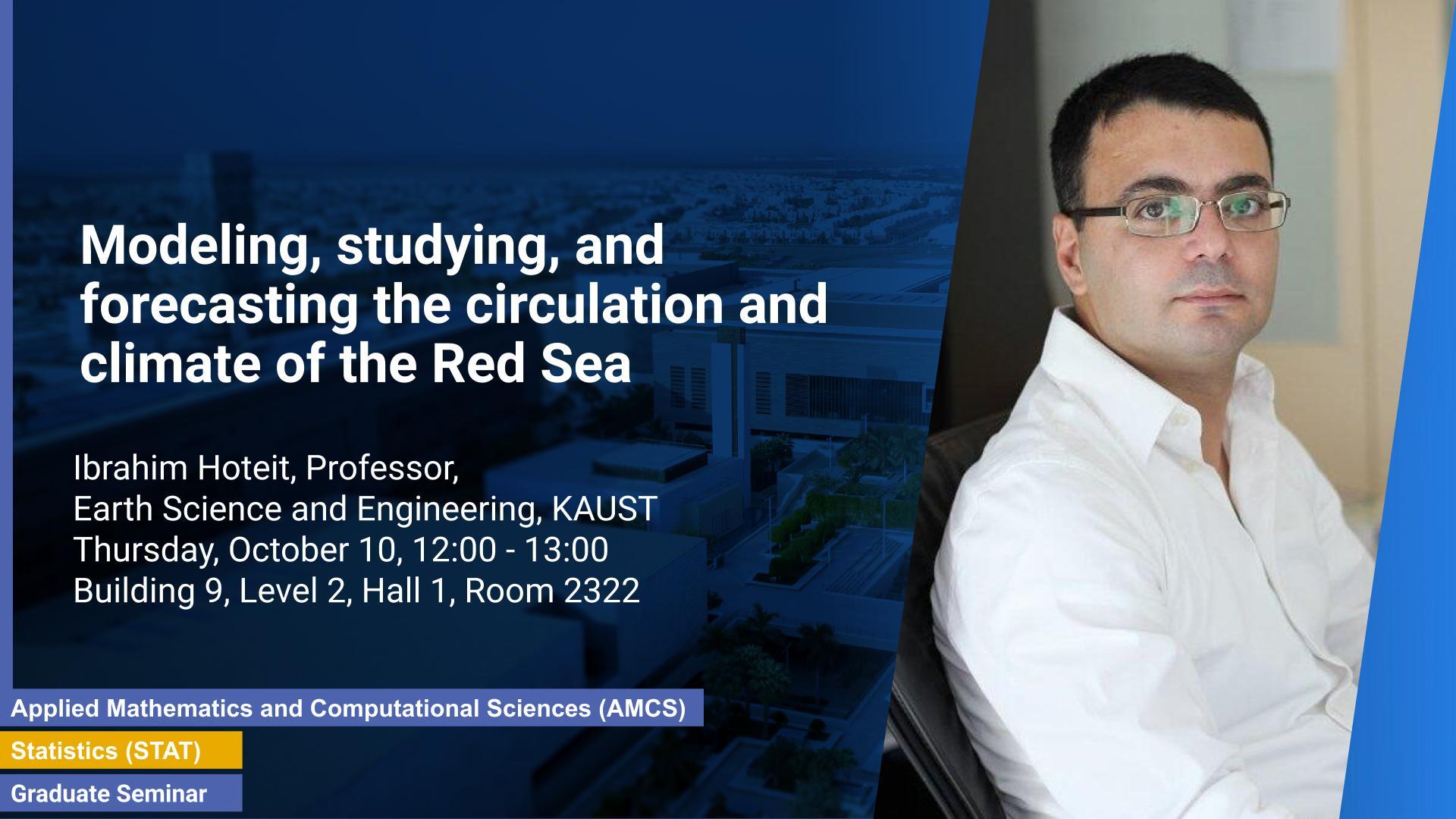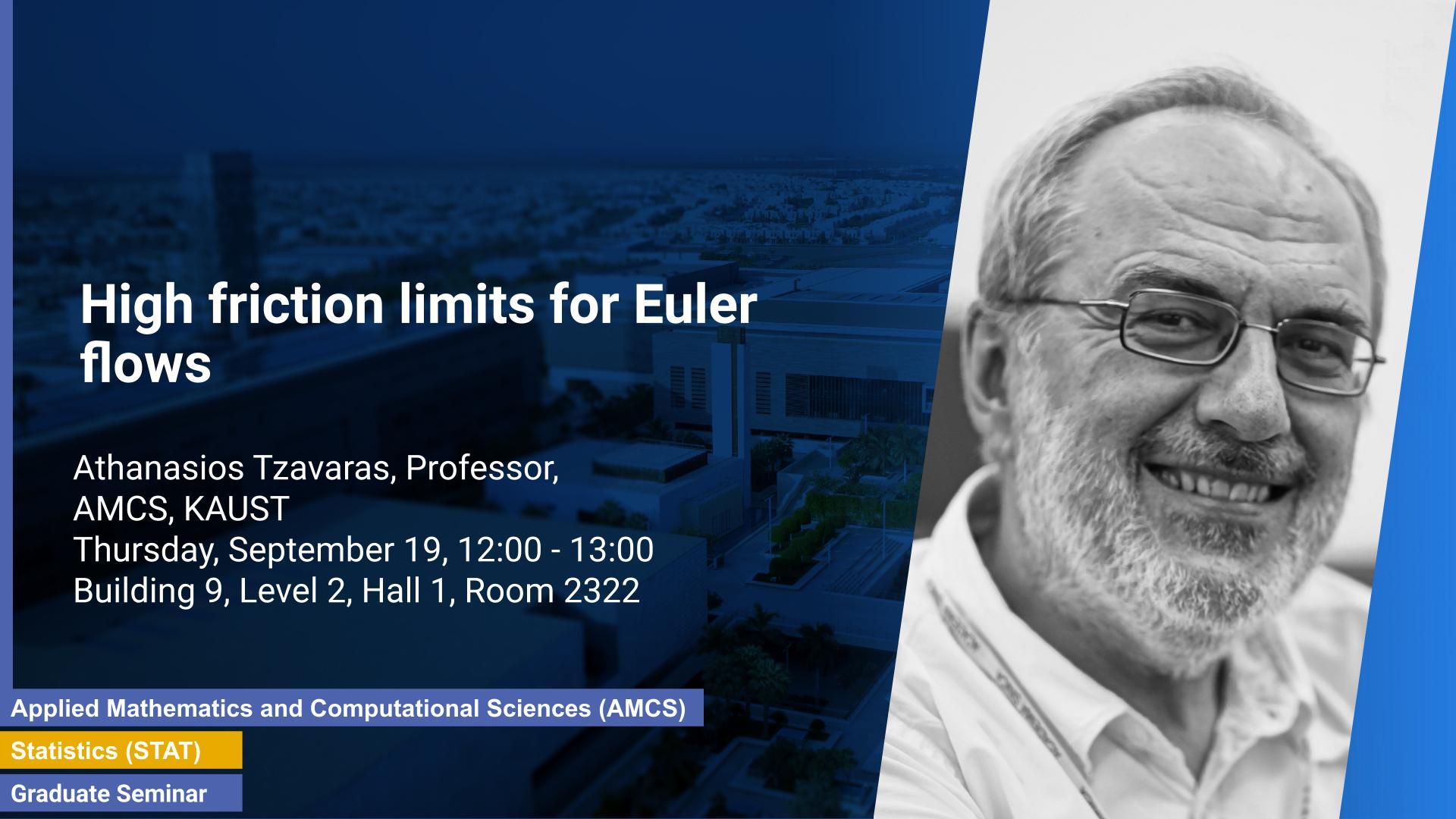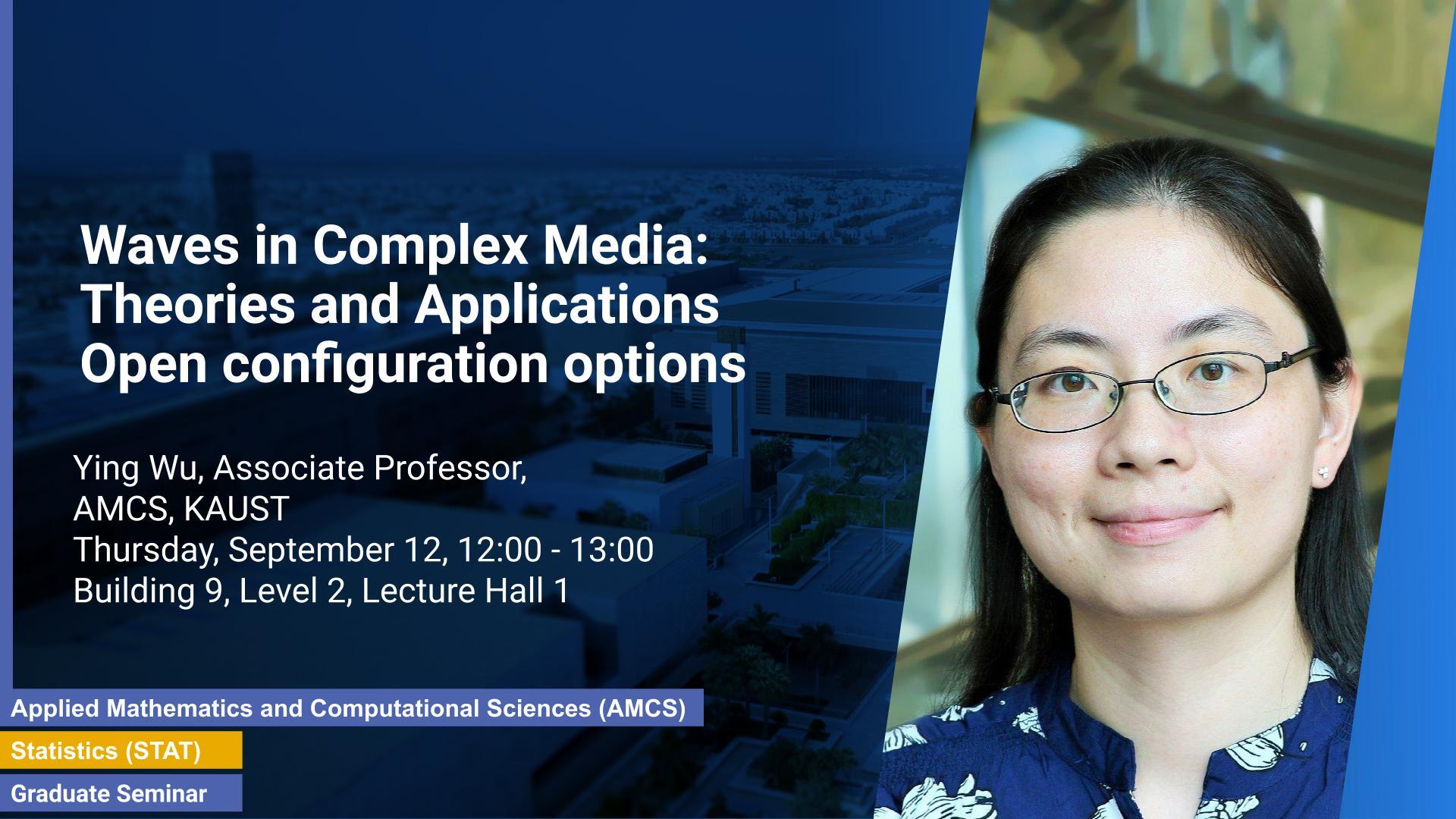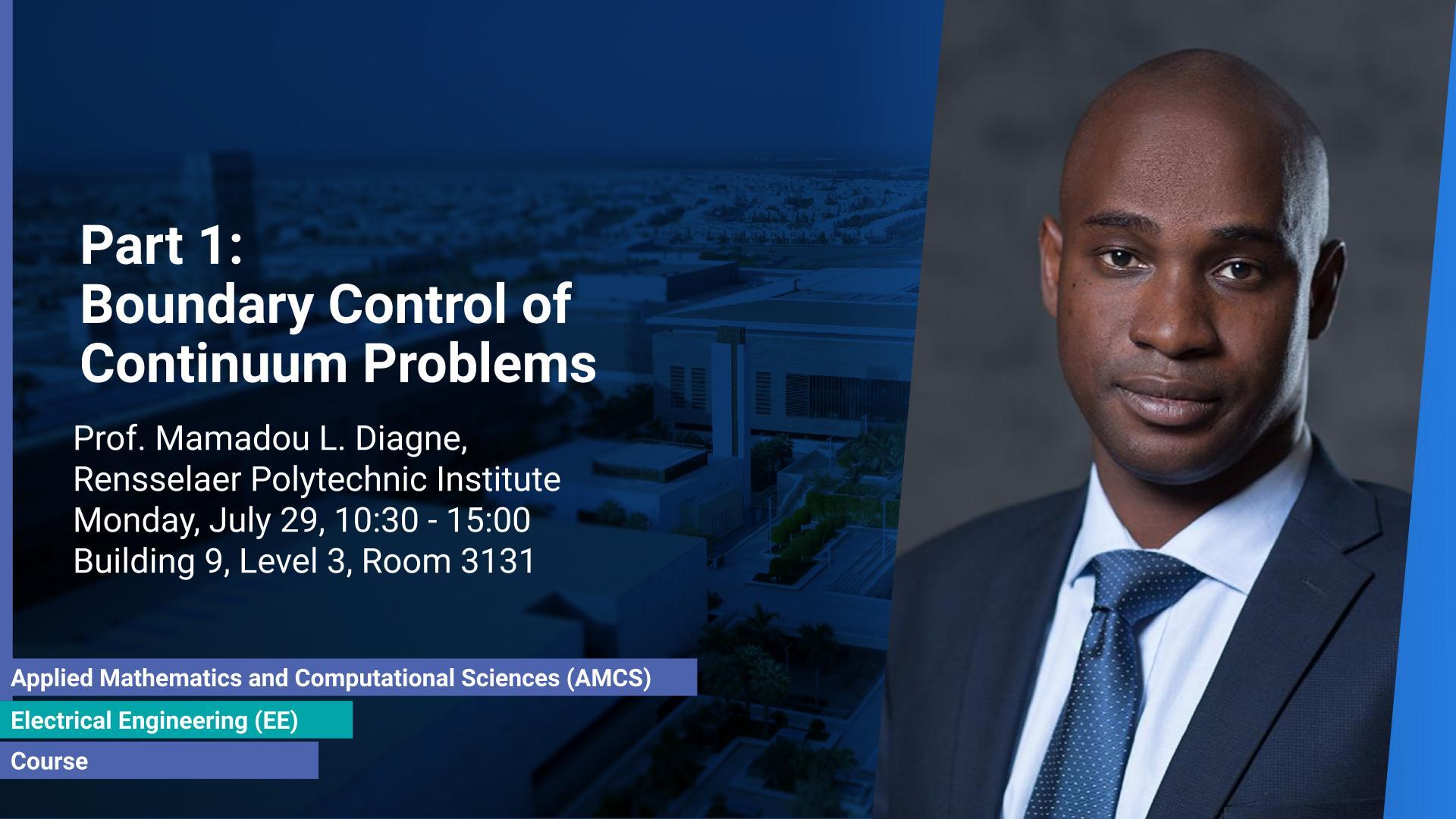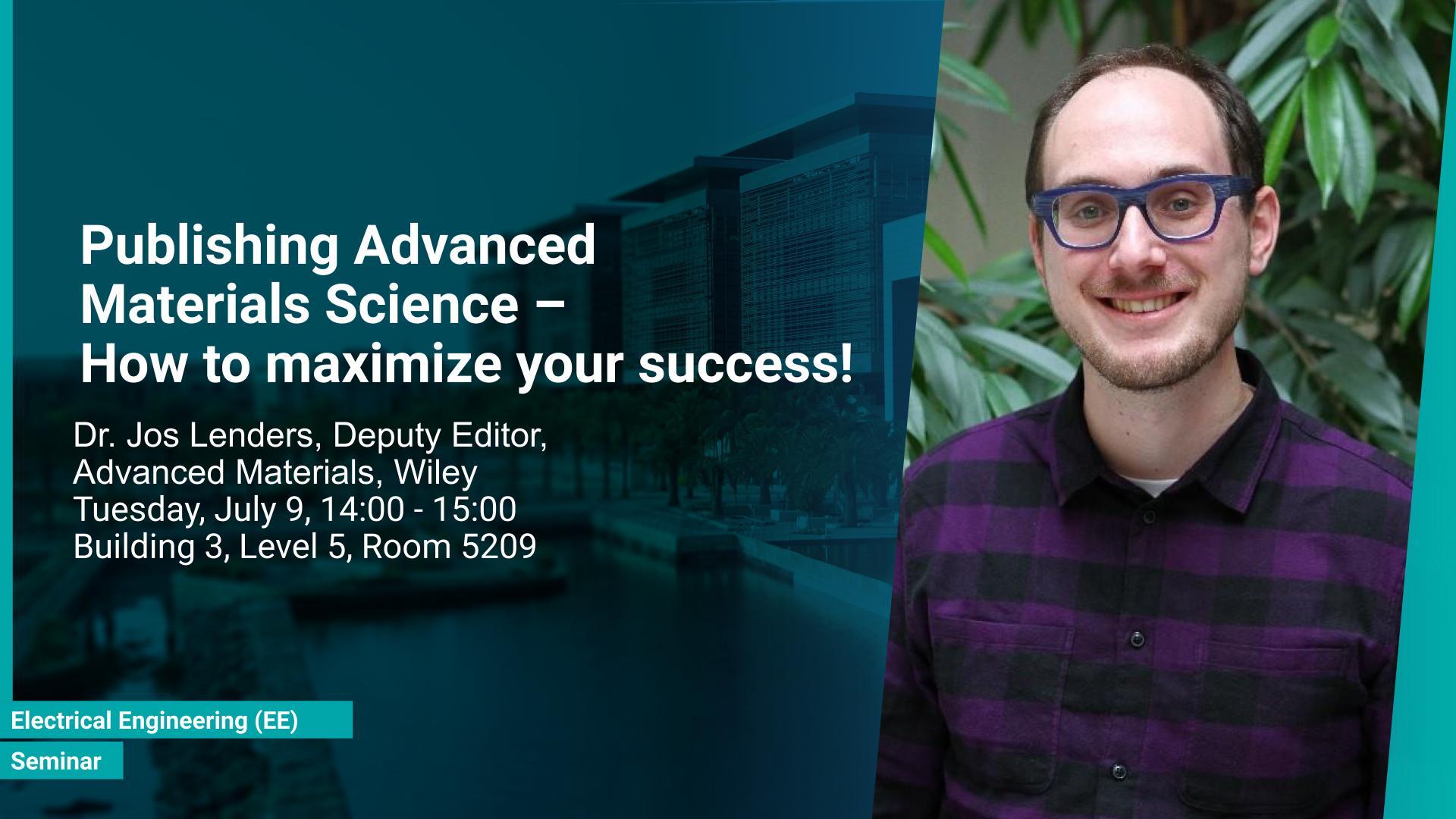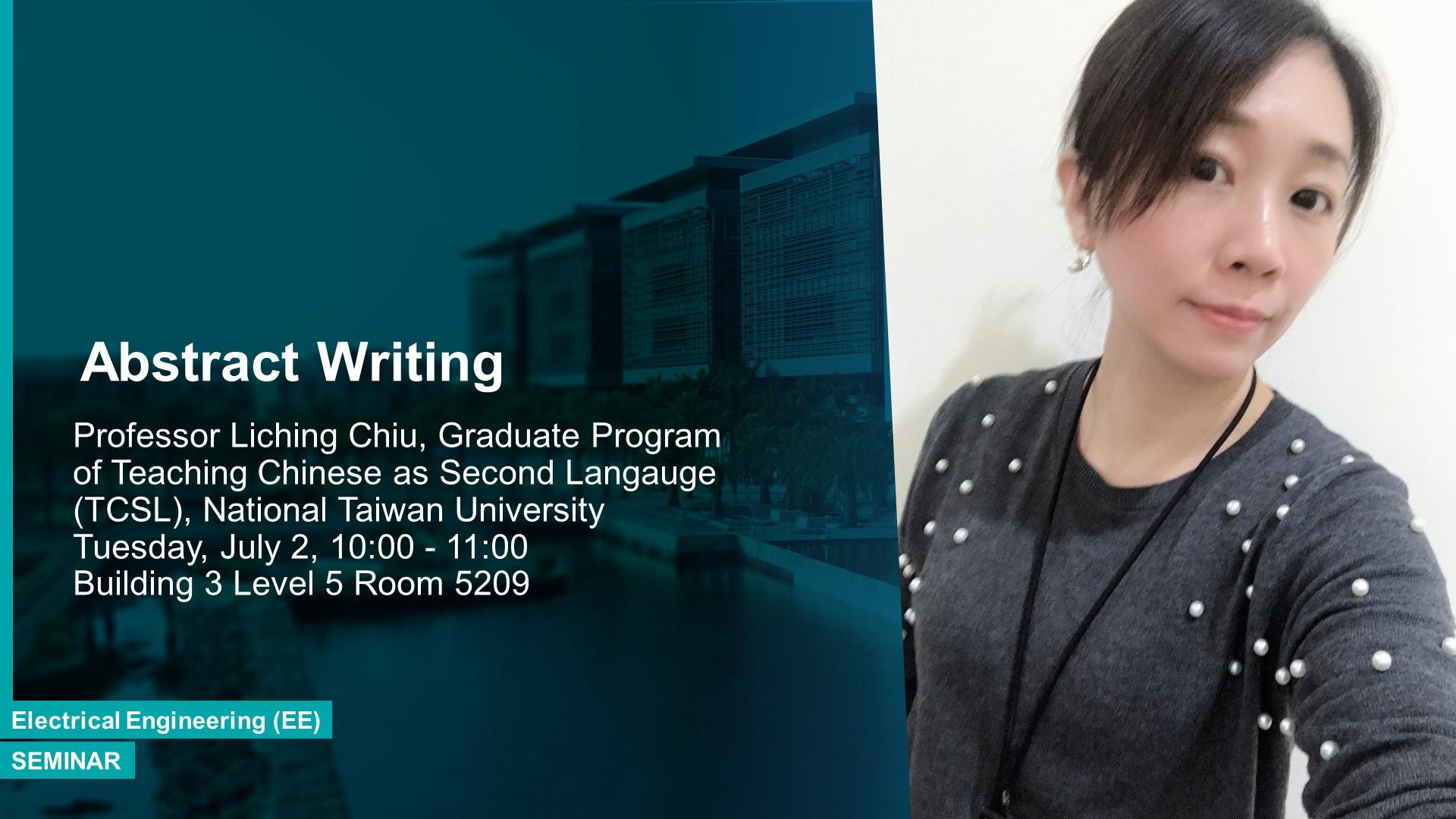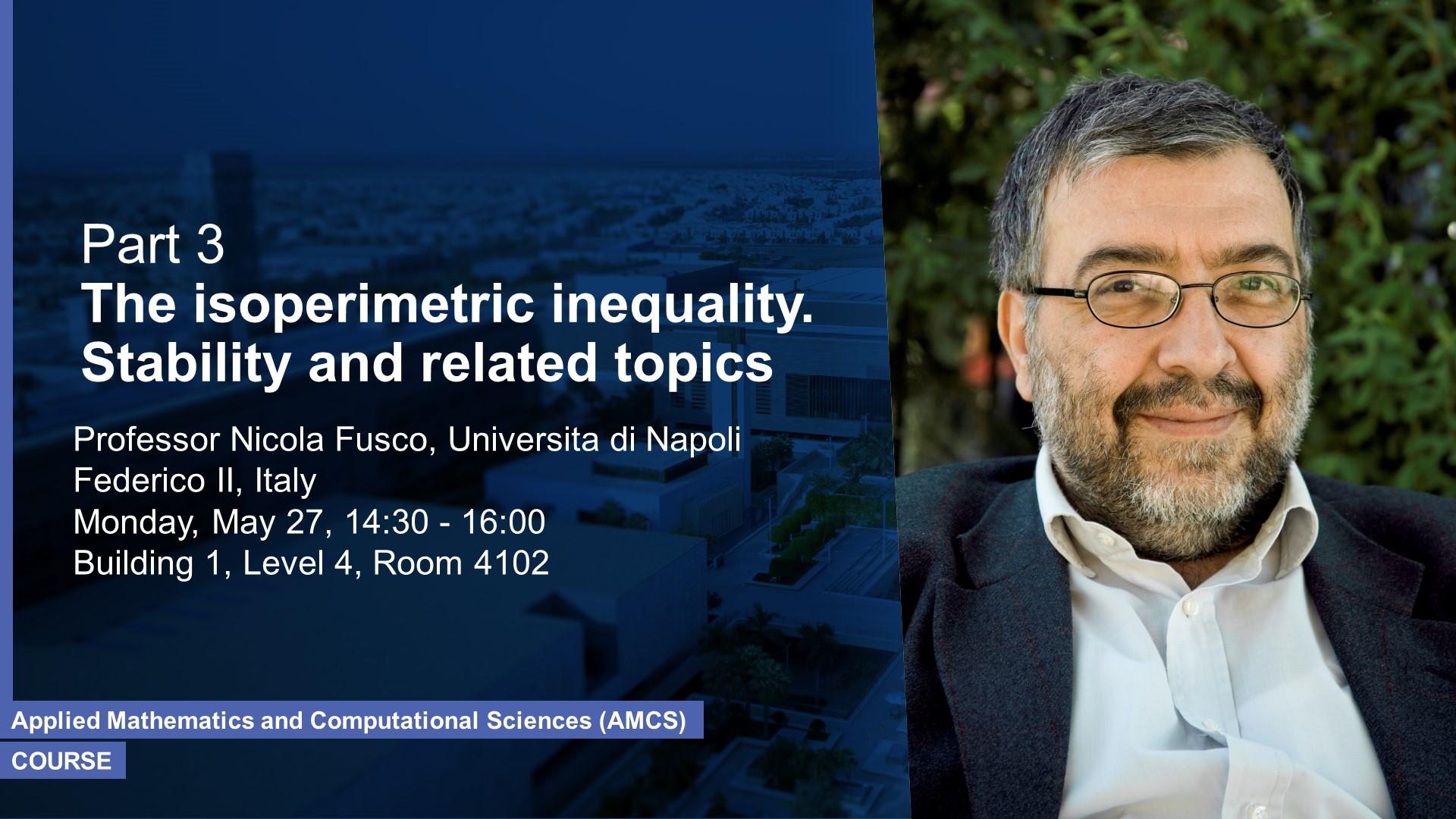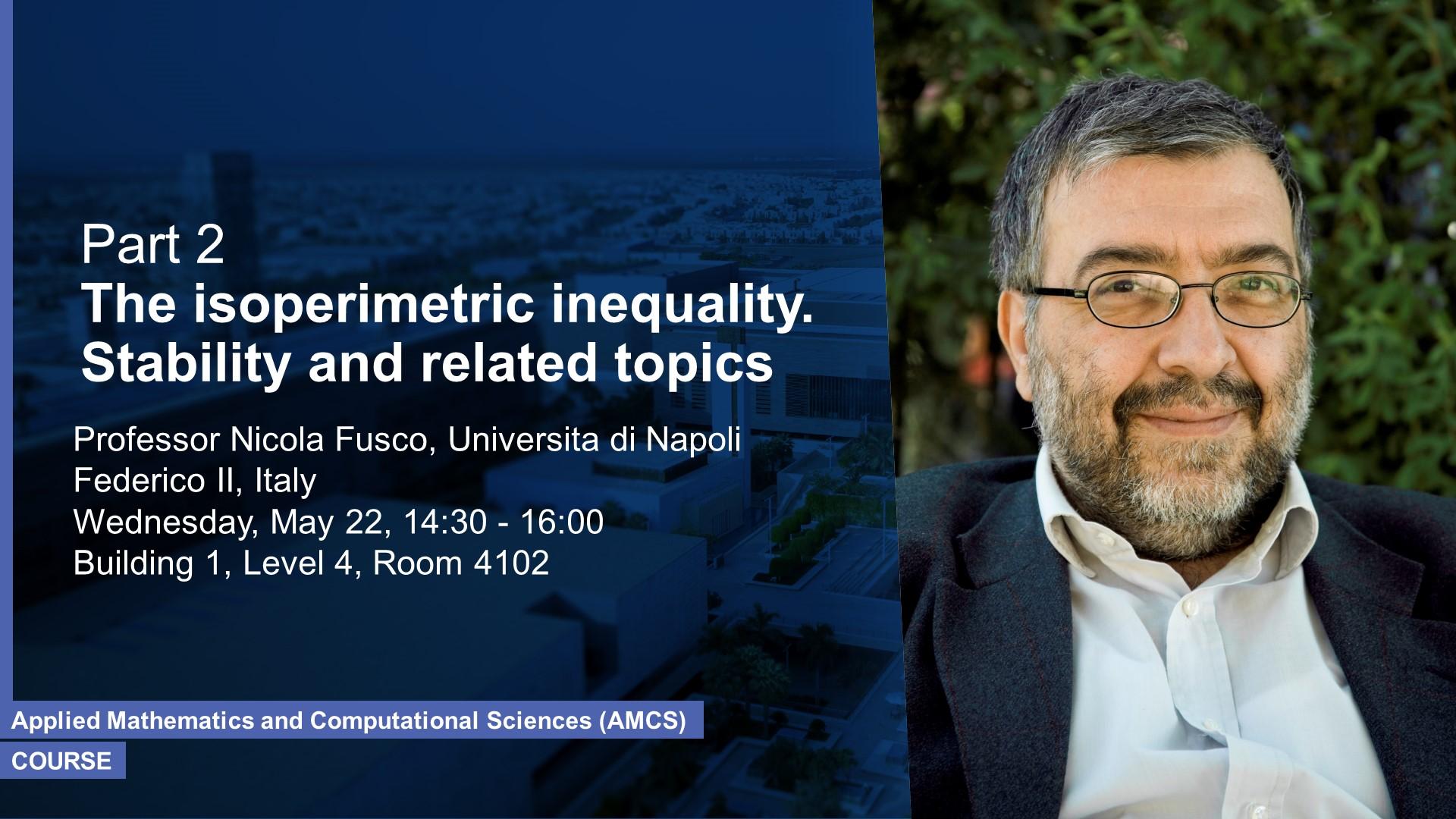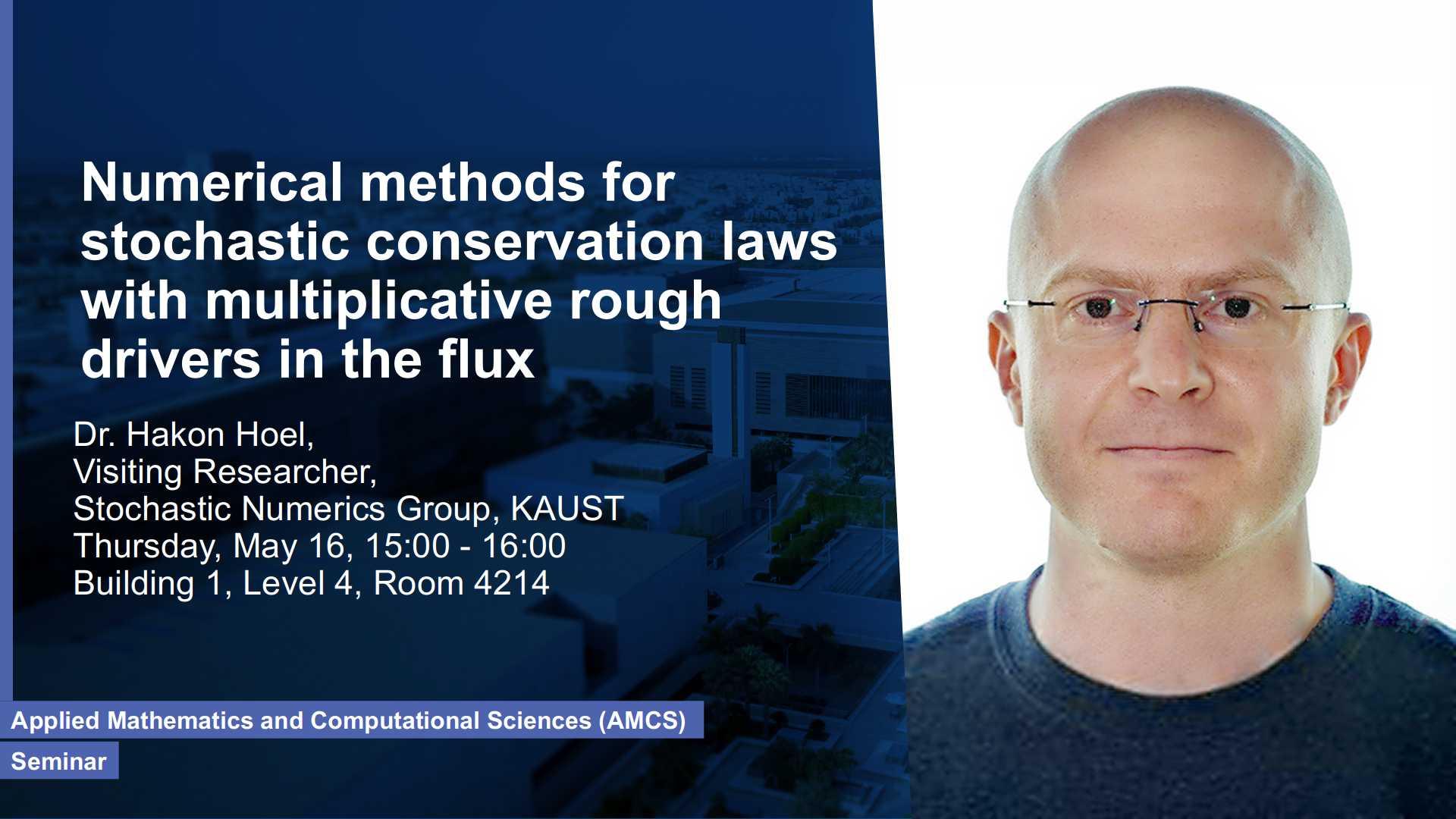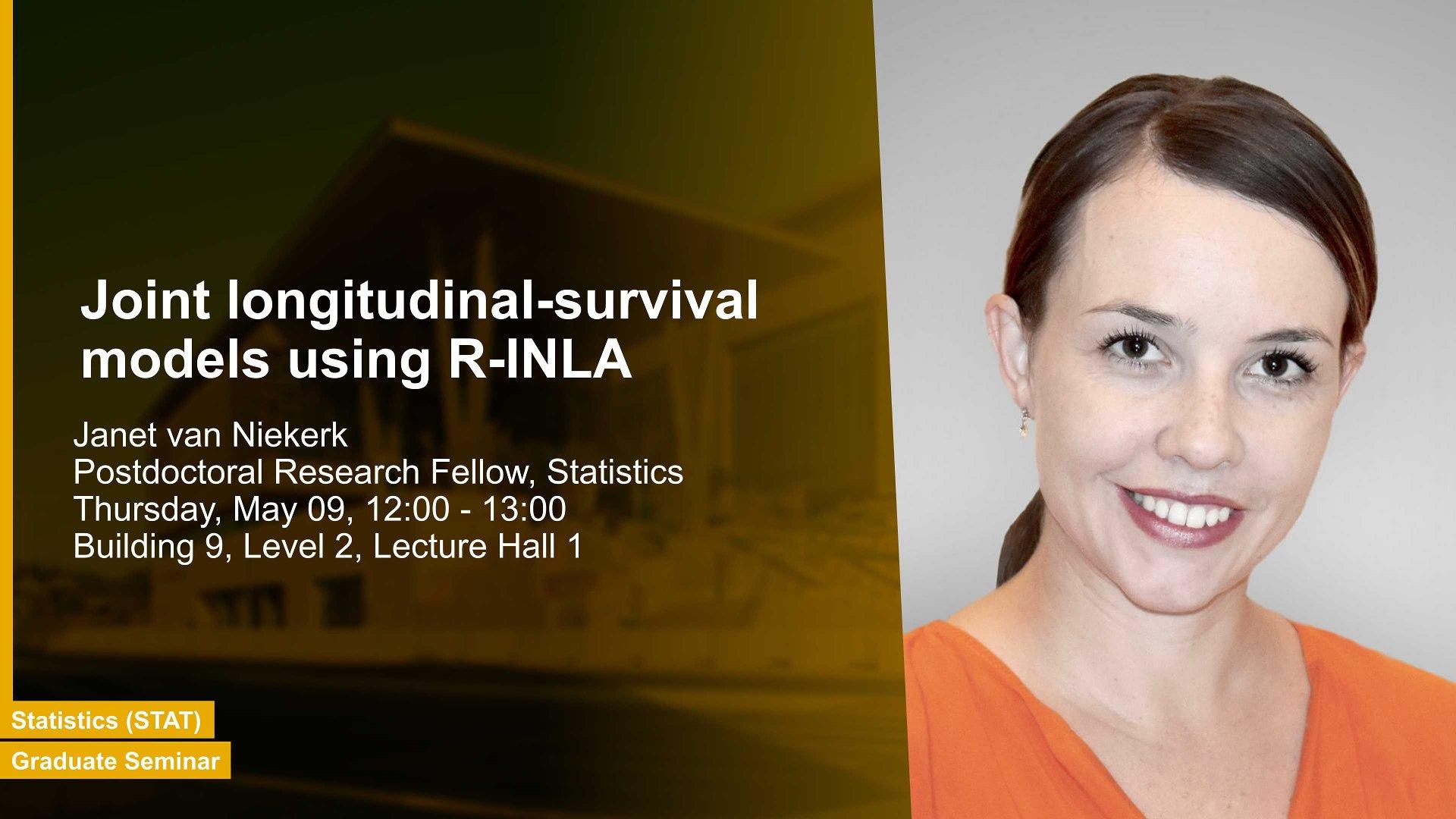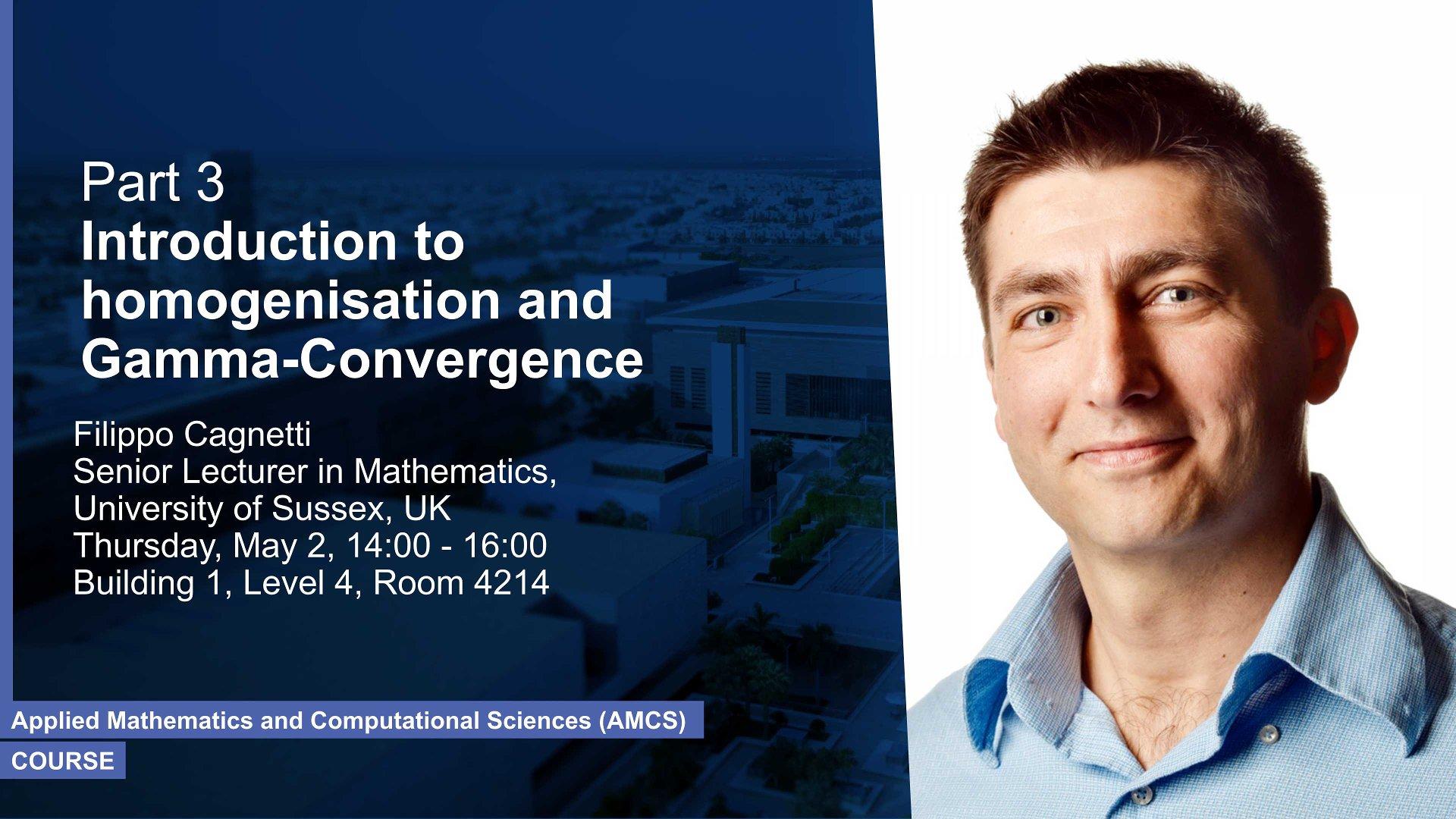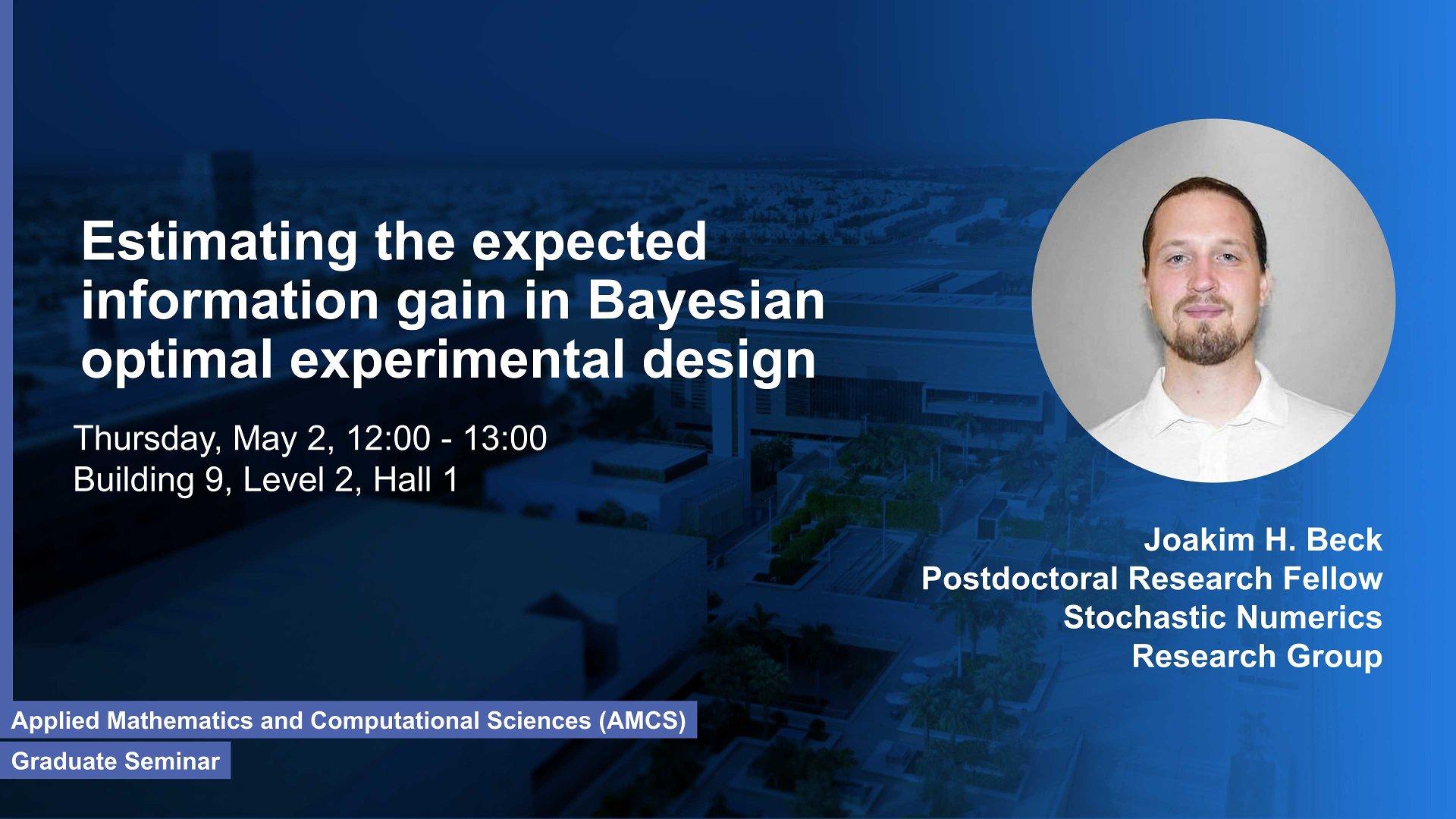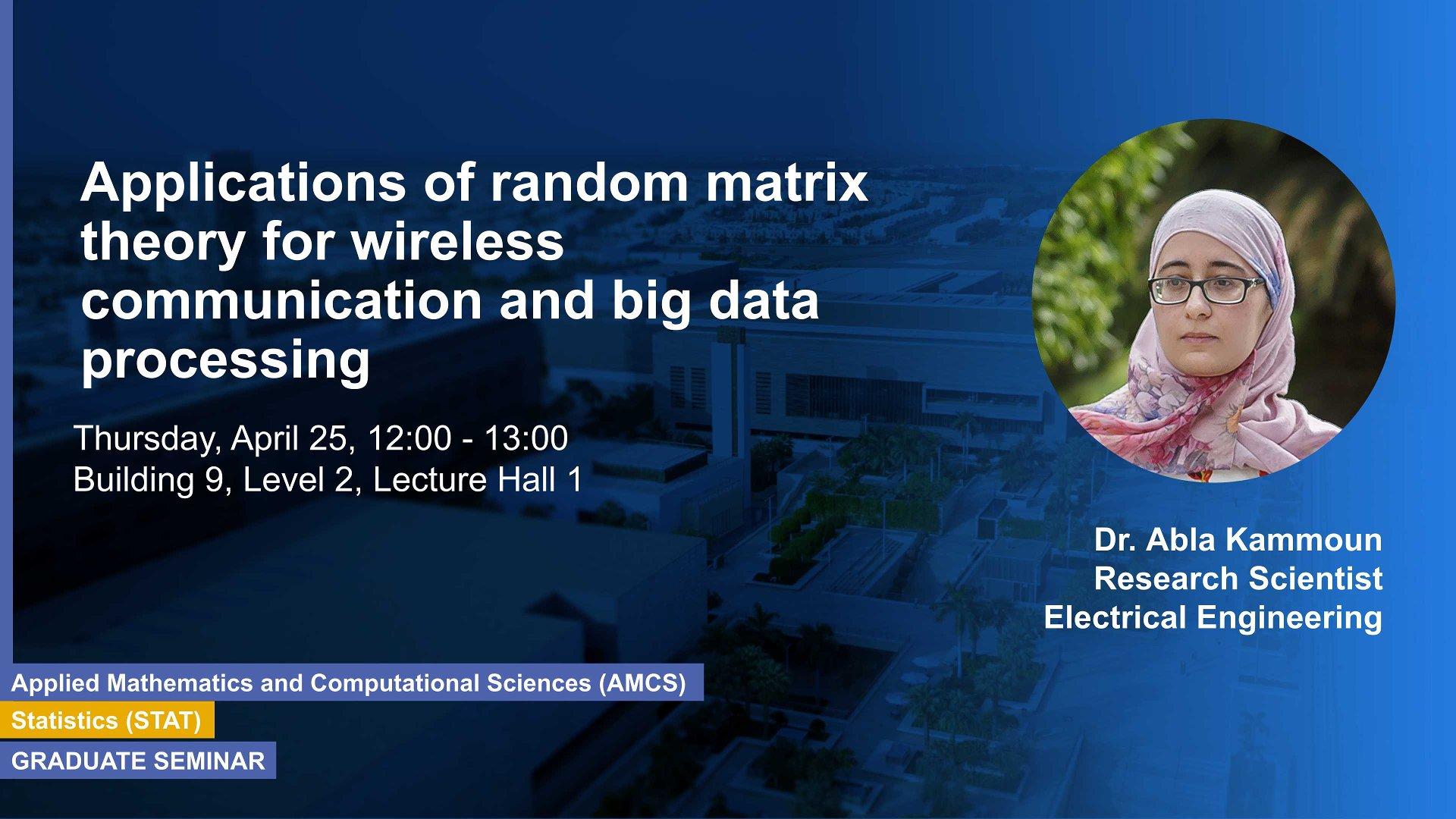Professor,
Earth Science and Engineering
Thursday, October 10, 2019, 12:00
- 13:00
Building 9, Level 2, Hall 1, Room 2322
Contact Person
Abstract
The talk will present the integrate
Thursday, September 19, 2019, 12:00
- 13:00
Building 9, Level 2, Hall 1, Room 2322
Contact Person
Sunday, September 15, 2019, 12:00
- 13:00
Building 9, Level 2, Hall 1, Room 2322
Contact Person
Wave functional materials are artificial materials that can control wave propagation as wished. In this talk, I will give a brief review of the progress of wave functional materials and reveal the secret behind the engineering of these materials to achieve desired properties.
Thursday, September 12, 2019, 12:00
- 13:00
Building 9, Level 2, Lecture Hall 1
Contact Person
We focus on the theoretical modeling and numerical simulation of classical wave propagation in complex systems, such as periodic structures and random media. In this talk, I will give an overview of the research conducted in our group by emphasizing on three major aspects: numerical method, homogenization, and applications in artificial materials.
Professor Rajesh Rajamani, Mechanical Engineering, University of Minnesota
Sunday, September 01, 2019, 11:00
- 12:00
Building 1, Level 2, Room 4214
A number of exciting vehicle automation and active safety systems are being developed by research groups around the world. This talk focuses on novel sensors, estimation algorithms and control systems that can fill critical gaps in the automation technologies under development. The first part of this seminar describes interesting sensing and estimation solutions that can significantly improve the effectiveness of active safety systems. The second part of the seminar describes the development of a new class of narrow commuter vehicles designed to address traffic congestion, improve highway mobility and provide very high fuel economy. The final part of the seminar describes the development of a smart bicycle with instrumentation that can track trajectories of nearby vehicles on the road and provide warnings to the motorist, if a potential car-bicycle collision is detected.
Professor Mamadou L. Diagne, Rensselaer Polytechnic Institute
Wednesday, July 31, 2019, 10:30
- 15:00
Building 9, Level 3, Room 3131
Partial Differential Equations (PDEs) are often used to model various complex physical systems. Representative engineering applications such as heat exchangers, transmission lines, oil wells, road traffic, multiphase flow, melting phenomena, supply chains, collective dynamics, and even chemical processes governing the state of charge of Lithium-ion battery, extrusion, reactors to mention a few. Generally, key aspects of these processes operating mode are driven by convection phenomena with a spatiotemporal dynamic that cannot be approximated straightforwardly using a finite-dimensional representation. This course will explore the boundary control of several class of PDEs via the well-known backstepping method.
Professor Mamadou L. Diagne, Rensselaer Polytechnic Institute
Tuesday, July 30, 2019, 10:30
- 15:00
Building 9, Level 3, Room 3131
Partial Differential Equations (PDEs) are often used to model various complex physical systems. Representative engineering applications such as heat exchangers, transmission lines, oil wells, road traffic, multiphase flow, melting phenomena, supply chains, collective dynamics, and even chemical processes governing the state of charge of Lithium-ion battery, extrusion, reactors to mention a few. Generally, key aspects of these processes operating mode are driven by convection phenomena with a spatiotemporal dynamic that cannot be approximated straightforwardly using a finite-dimensional representation. This course will explore the boundary control of several class of PDEs via the well-known backstepping method.
Professor Mamadou L. Diagne, Rensselaer Polytechnic Institute
Monday, July 29, 2019, 10:30
- 15:00
Building 9, Level 3, Room 3131
Partial Differential Equations (PDEs) are often used to model various complex physical systems. Representative engineering applications such as heat exchangers, transmission lines, oil wells, road traffic, multiphase flow, melting phenomena, supply chains, collective dynamics, and even chemical processes governing the state of charge of Lithium-ion battery, extrusion, reactors to mention a few. Generally, key aspects of these processes operating mode are driven by convection phenomena with a spatiotemporal dynamic that cannot be approximated straightforwardly using a finite-dimensional representation. This course will explore the boundary control of several class of PDEs via the well-known backstepping method.
Dr. Jos Lenders, Deputy Editor, Advanced Materials, Wiley
Tuesday, July 09, 2019, 14:00
- 15:00
B3 L5 Room 5209
Materials science is a multidisciplinary field of research with many different scientists and engineers having various backgrounds active in it. The literature landscape consequently is populated currently by a wide range of journals which greatly differ in purpose, scope, quality, and readership. Jos Lenders, Deputy Editor of Advanced Materials, Advanced Functional Materials, and Advanced Optical Materials, will track some of the most important developments and trends in the research field and the Advanced journals program. Last year, Advanced Materials reached an Impact Factor of 21.95 and received over 8,300 submissions – and Advanced Functional Materials over 9,200. Only around 15% of all those papers made it to publication in the journal, and this rate is similar for all other Advanced journals. So, what do editors do to select the very best papers, and what can authors do to optimize their chances of having their manuscripts accepted?
Prof. Liching Chiu, Graduate Program of Teaching Chinese as a Second Language (TCSL), National Taiwan University
Tuesday, July 02, 2019, 10:00
- 11:00
B3 L5 Room 5209
This series of lectures guide students to the preparation and analysis of a well-organized abstract. We will discuss the proper language (tense, voice, and person) for abstract writing, and learn how to meet the purposes of different abstracts. Finally, students will have a chance to compose and evaluate their writing. Topics: Overview of abstract writing; Conference abstract journal abstract; Organization of an abstract; Language conventions of abstract writing; Disciplinary abstract analysis; Frequent mistakes of abstract writing.
Prof. Liang Feng, Department of Materials Science and Engineering, University of Pennsylvania
Thursday, May 30, 2019, 10:00
- 11:00
B1 L2 Room 4214
Contact Person
Quantum mechanics and photonics share mathematical equivalence. By carefully exploiting the interplay between optical index, gain and loss in the complex dielectric permittivity plane, optics has become an ideal platform to explore some exotic quantum concepts, such as topological physics and parity-time (PT) symmetry. Instead of counteracting optical losses at micro and nano scales in integrated photonics, we started from an opposite viewpoint and developed a new paradigm of positively and strategically manipulating optical losses by the quantum-inspired photonics concept enrich fundamental optical physics and realized novel photonic synthetic matters with unique optical functionalities. In this seminar, I will present our recent efforts on engineering the complex optical potentials at an exceptional point (i.e. PT symmetry transition point). Based on the exceptional point-induced unidirectionality, we harness optical losses to enable unique microlaser functionalities, in particular, an orbital angular momentum (OAM) microlaser that structures and twists the lasing radiation at the microscale, which is expected to address the growing demand for information capacity. Additionally, I will discuss non-Hermitian topological photonics where optical non-Hermiticity and topological physics are coupled.
Professor Ritesh Agarwal, Department of Materials Science and Engineering, University of Pennsylvania
Thursday, May 30, 2019, 09:00
- 10:00
B1 L2 Room 4214
Contact Person
Strongly confined electrical, optical and thermal excitations drastically modify material’s properties and break local symmetries that can enable precisely tunable novel responses and new functionalities. We will discuss the effect of engineered plasmonic lattice on light matter interactions in 2D excitonic crystals to produce novel responses such as enhanced and tunable emission, Fano resonances and strong exciton-plasmon polaritons, which can be precisely controlled by geometry and applied fields to produce novel device concepts. Our recent work on collective polaritonic modes and the formation of a complete polaritonic bandgap in few-layered excitonic semiconductors coupled to plasmons will also be presented.
Prof. Nicola Fusco, Università di Napoli Federico II, Italy
Wednesday, May 29, 2019, 15:30
- 17:00
B1 L4 room 4102
Contact Person
The aim of the course is to give a self contained introduction, at the level of a graduate course, to the stability of the isoperimetric inequality and other related geometric and functional inequality such as the Sobolev inequality, the Faber-Krahn and the Brunn-Minkowski inequality.
Lecture 4: I will discuss the quantitative isoperimetric inequality in the general case and the quantitative form of related geometric and functional inequalities.
Tuesday, May 28, 2019, 14:00
- 15:00
Building 2, Level 5, Room 5220
Contact Person
Mean-field games MFG are models of large populations of rational agents who seek to optimize an objective function that takes into account their state variables and the distribution of the state variable of the remaining agents. MFG with congestion model problems where the agents’ motion is hampered in high-density regions. First, we study radial solutions for first- and second-order stationary MFG with congestion on R^d. Next, we consider second-order stationary MFG with congestion and prove the existence of stationary solutions. Additionally, we study first-order stationary MFG with congestion with quadratic or power-like Hamiltonians.
Prof. Nicola Fusco, Università di Napoli Federico II, Italy
Monday, May 27, 2019, 14:30
- 16:00
B1 L4 room 4102
Contact Person
The aim of the course is to give a self contained introduction, at the level of a graduate course, to the stability of the isoperimetric inequality and other related geometric and functional inequality such as the Sobolev inequality, the Faber-Krahn and the Brunn-Minkowski inequality.
Lecture 3: I will present Fuglede’s proof of the quantitative isoperimetric inequality for convex and for nearly spherical sets
Prof. Nicola Fusco, Università di Napoli Federico II, Italy
Wednesday, May 22, 2019, 14:30
- 16:00
B1 L4 room 4102
Contact Person
The aim of the course is to give a self contained introduction, at the level of a graduate course, to the stability of the isoperimetric inequality and other related geometric and functional inequality such as the Sobolev inequality, the Faber-Krahn and the Brunn-Minkowski inequality. Lecture 2: I will present De Giorgi’s proof of the isoperimetric inequality and comment on other proofs of the isoperimetric inequality
Prof. Rolf Krause, Faculty of Informatics, Università della Svizzera Italiana, Lugano
Tuesday, May 21, 2019, 12:00
- 13:00
Building 9, Hall 2
Contact Person
Complex geometries, non-smooth surface-effects, non-linear and heterogeneous material behaviour, and coupled multi-physics problems pose fundamental challenges for numerical simulation methods - may it be on the mathematical or on the software sie. In this talk, we will present and discuss multi-scale approaches for the efficient solution of smooth and non-smooth large scale non-linear systems, and we will comment on how to realize them in modern and HPC-friendly scientific software. Particular emphasis will be put on the design and construction of non-standard approximation and model hierarchies for non-linear problems, which then will be exploited for designing efficient solution methods in space, time, and space-time.
Prof. Nicola Fusco, Università di Napoli Federico II, Italy
Monday, May 20, 2019, 14:30
- 16:00
B1 L4 room 4102
Contact Person
The aim of the course is to give a self contained introduction, at the level of a graduate course, to the stability of the isoperimetric inequality and other related geometric and functional inequality such as the Sobolev inequality, the Faber-Krahn and the Brunn-Minkowski inequality. Lecture 1: I will introduce some basic notions of the theory of sets of ignite perimeter and of geometric measure theory.
Visiting Researcher,
Stochastic Numerics Research Group
Thursday, May 16, 2019, 15:00
- 16:00
B1 L4 Room 4214
Contact Person
Abstract
Stochastic conserv
Thursday, May 09, 2019, 12:00
- 13:00
B9 L2 Lecture Hall 1
Joint models have received increasing attention during recent years with extensions into various directions; numerous hazard functions, different association structures, linear and non-linear longitudinal trajectories amongst others. They gained popularity amongst practitioners by the ability to incorporate various data sources. In this talk, we will introduce joint models and provide some conceptual ideas about their use and necessity. Also, we will illustrate how these models can be formulated as Latent Gaussian Models and hence be implemented using R-INLA.
Filippo Cagnetti, Senior Lecturer in Mathematics, University of Sussex, UK
Thursday, May 02, 2019, 14:00
- 16:00
B1 L4 Room 4214
Contact Person
We will start by introducing the notion of Gamma-convergence and its main properties. We will then show how this can be applied to the study of homogenization of integral functionals. This includes, as a particular case, the homogenization of uniformly elliptic PDEs. Lecture 3: (1) Compactness; (2) Application of the compactness result; 93) The homogenisation theorem.
Thursday, May 02, 2019, 12:00
- 13:00
B9 L2 Hall 1
Contact Person
Optimal experimental design for parameter estimation is a fast-growing area of research. Let us consider the experimental goal to be the inference of some attributes of a complex system using measurement data of some chosen system responses, and the optimal designs are those that maximize the value of measurement data. The value of data is quantified by the expected information gain utility, which measures the informativeness of an experiment. Often, a mathematical model is used that approximates the relationship between the system responses and the model parameters acting as proxies for the attributes of interest.
Filippo Cagnetti, Senior Lecturer in Mathematics, University of Sussex, UK
Wednesday, May 01, 2019, 14:00
- 16:00
B1 L2 Room 2202
Contact Person
We will start by introducing the notion of Gamma-convergence and its main properties. We will then show how this can be applied to the study of homogenization of integral functionals. This includes, as a particular case, the homogenization of uniformly elliptic PDEs. Lecture 2: (1) Integral functionals with p growth, 1 < p < 1; The localisation method of Gamma-convergence; Integral representation.
Filippo Cagnetti, Senior Lecturer in Mathematics, University of Sussex, UK
Tuesday, April 30, 2019, 14:00
- 16:00
Auditorium 0215 (between building 2 and 3)
Contact Person
We will start by introducing the notion of Gamma-convergence and its main properties. We will then show how this can be applied to the study of homogenization of integral functionals. This includes, as a particular case, the homogenization of uniformly elliptic PDEs. Lecture 1: (1) The homogenisation problem; (2) Gamma-convergence - definition, main properties, examples, comparison with pointwise limit; (3) Lower semicontinuity, lower semicontinuous envelope; (4) Coercivity
Thursday, April 25, 2019, 12:00
- 13:00
B9 L2 Lecture Hall 1
Since the pioneer works of Telatar, random matrix theory has found a variety of applications in engineering disciplines that, to name a few, include wireless communication and signal processing. Its scope is now going far beyond the field of mathematics, being recognized as an indispensable tool for advanced research in engineering disciplines as can be evidenced by the dramatic increase in related publications. Recently, random matrix theory has found its way into the field of big data processing, allowing accurate characterization of the performance of many algorithms met in the field of machine learning.
